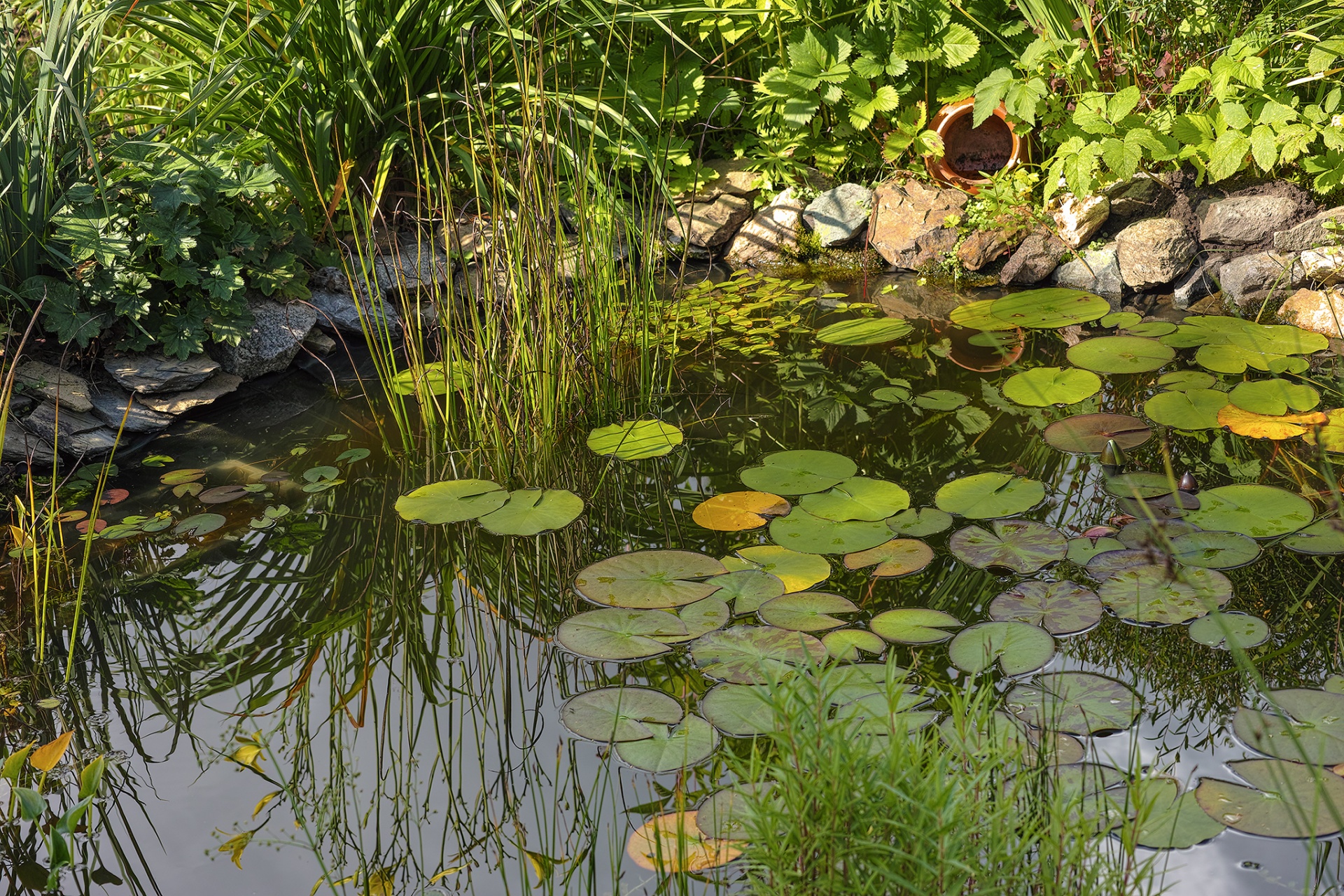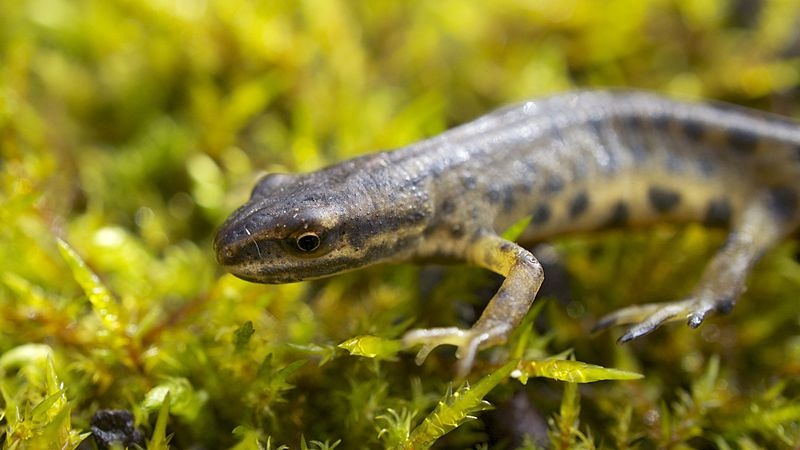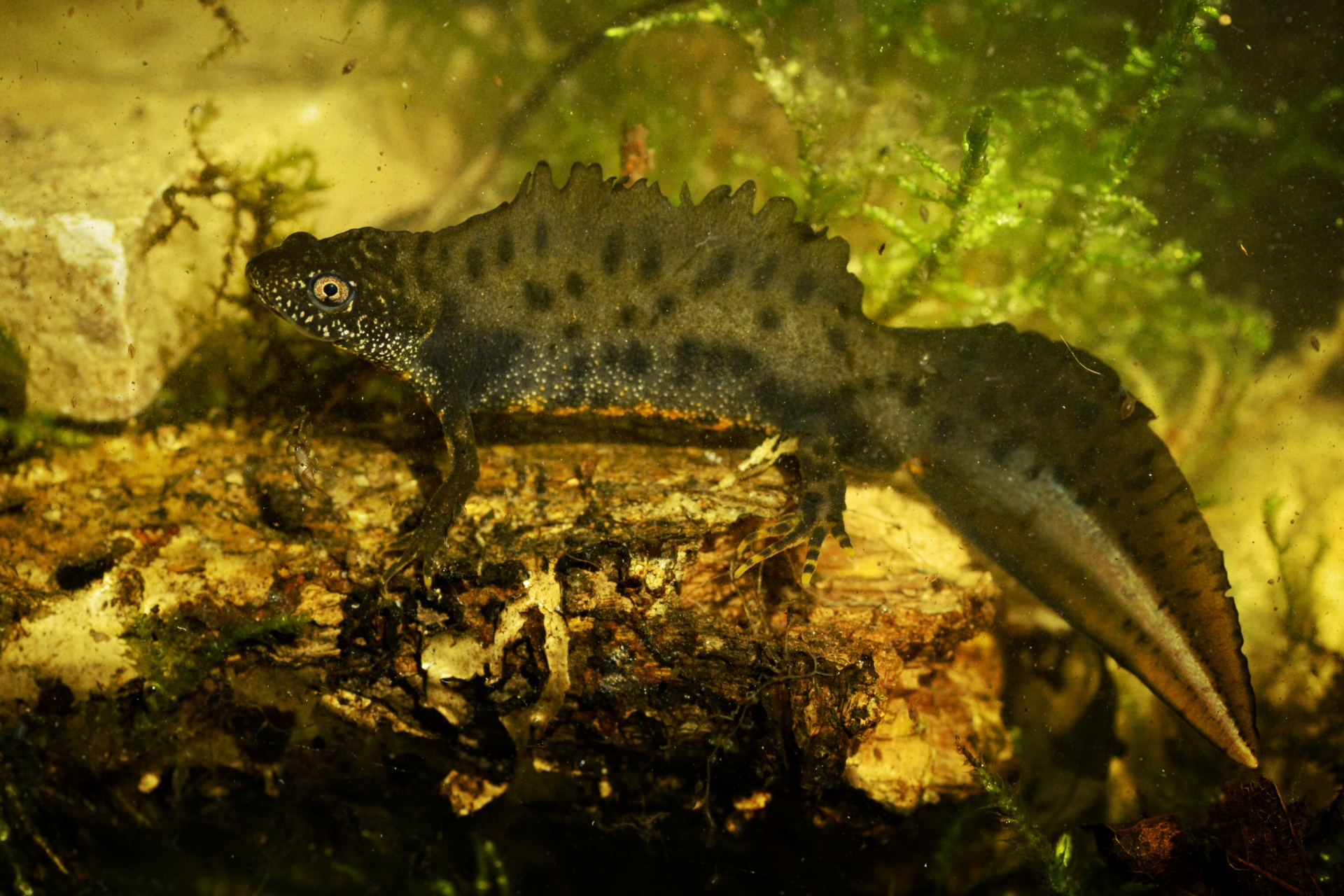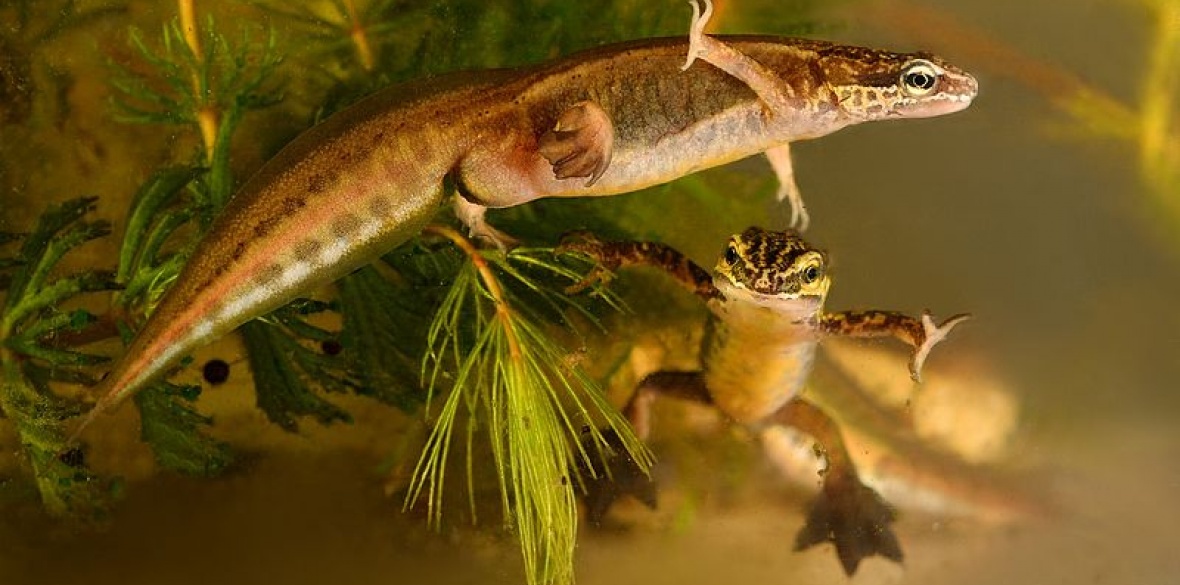This is the last article you can read this month
You can read more article this month
You can read more articles this month
Sorry your limit is up for this month
Reset on:
Please help support the Morning Star by subscribing here
LATE March or early April is the time to see newts. They will have spent the winter sleeping away hidden among tree roots, under rocks or in crevices.
Come the spring and newts can think of only one thing — procreation. They take to the water.
It’s now you see them swimming in ponds. The male newt takes on his breeding costume. Two species, smooth and great crested each have impressive crests. As well as growing the crest, newts’ colours brighten.
The male starts to dance to attract the more dowdy female. His ritual courtship display, crest erect, body stiff with his tail curled and its tip quivering may catch a female’s attention.
He also has a secret chemical weapon. He wafts pheromones in her direction, and she cannot resist.
While they are living the aquatic life they will be eating their favourite food — frog tadpoles. This can reduce a pond’s frog population considerably. That is why in smallish garden ponds you are unlikely to have healthy populations of both frogs and newts.
Unlike frog and toad tadpoles, newt larvae develop their front legs first, and have feathery external gills behind their heads and then come their back legs.
Once they have absorbed their gills and left the water, they are known as efts.
At this time the young efts will leave the water to spend between one and three years on land while they become sexually mature.
By July, the adult female will have laid all her eggs and the adults head back into the meadows, hedgerows and woodland. They won’t return to the pond for the rest of the year.

Ireland, the Isle of Man and some Scottish islands have no native newts.
If you are lucky enough to have newts in your garden pond it will be one of three native species, although more exotic salamanders are also sometimes found. They are escaped pets or deliberately introduced species.
Common lizards can be confused with newts. One wildlife website tried to identify newts basking in the sun on the edge of a pond. They asked for a picture because newts never bask. The animals were common lizards (Lacerta vivipara).
Let’s take a closer look at Britain’s three native species of newt. They can be tricky to tell apart, but with a little detective work it’s possible to narrow them down.
Let’s start with the most common, the smooth newt (Lissotriton vulgaris). Both males and females are brown in colour with spotty, orange bellies.
During the breeding season, males have a wavy crest along their backs which can lead to confusion with the much larger great crested newt. Adults can reach up to four inches (10cm) long.

Also known as the common newt, they are widespread across Britain and are often found in garden ponds. Frog tadpoles are the favourite food if available. They also eat water and land invertebrates.
The best time to see them is during the breeding season, adults can be found in ponds where they spawn.
Watch for them rising to the surface of ponds to take a nip of air before darting back down again. Eggs are laid individually and wrapped in the leaves of pond plants.
In late summer, both juvenile newts and adults leave the water. They can often be found sheltering in damp soil beneath logs and rocks.
Our most spectacular amphibian is the great crested newt (Triturus cristatus), Britain’s largest newt species.
Adults can reach up to seven or eight inches (17cm) in length, females grow larger than males. They can live up to 25 years.

They are much darker in colour than other newt species and have bumpy skin. Both males and females have bright orange bellies with large, blotchy dark spots.
During the breeding season males sport a toothed crest along their backs. Their tails also take on a white stripe towards the tip.
Great crested newt larvae have a fine filament at the tip of their tail and are covered in black speckles.
Many a hunting cat has discovered that this newt exudes a foul-tasting substance from glands in their skin. This helps ward off all predators, not just fishing moggies.
This species has declined and its range shrunk in recent decades. The newt and its habitat are strongly protected by law.
Much of its diet is frog tadpoles where available. It also consumes aquatic and land invertebrates such as snails and worms.
All amphibians, including newts, take to the water to reproduce. The great crested’s breeding season is between March and June. Males display to potential mates, using their flattened tails in underwater courtship dances. Females then wrap their eggs in pond plants.
Last on our list of British pond newts is the palmate newt (Lissotriton helveticus). This newt is named after the shape of the male’s hind feet during the breeding season.
The word “palmate” describes the infilling between the newt’s toes.
Smooth and palmate newts are very similar in colouring and size. Unlike smooth newts however, palmate newts lack spots on their throats, which are pink or yellow in colour.
Males have black webbing on their back feet and a thin filament at the end of their tails during the breeding season.
This is Britain’s smallest newt — adults grow to less than four inches (9cm).
Palmate newt distribution is patchy and they are less common in middle England than other newts.
Look for them in shallow ponds in heath and bog acidic habitats. They can often be found further from water than other newt species after the breeding season.
Tadpoles and invertebrates are favourite foods. They can also turn cannibal and eat smaller palmate newts. Their sticky tongue helps them capture prey.
Palmate newts take to the water between February and July to breed, then move onto land.
They are most active at night. They overwinter from November underground in damp soil, often beneath logs, stone walls and plant roots.
Sadly today British newts are under threat from a deadly flesh-eating fungus. The same fungus has wiped out many related species of salamanders kept as pets all across Europe.
The killer fungus has caused a 99 per cent drop in fire salamanders in the Netherlands.
So far Britain’s wild newt population is mostly clear of the disease but conservationists warn that the risk of infection remains high due to the private trade in pet amphibians.
Dealers are being urged to take preventative measures to ensure that the killer Batrachochytrium salamandrivorans (Bsal) fungus does not escape into the wild.
Scientists from the Zoological Society of London (ZSL) and its research partners are now urging amphibian pet owners to enforce strict bio-security measures to protect Britain’s wild newts.
It would be catastrophic if we had a widespread Bsal infection among wild newts.
The research took skin swabs from more than 2,400 wild newts in ponds across the UK. They found no Bsal fungus in wild newts but believe that the risk of infection escaping into the wild remains high.
My fellow Morning Star columnist Ken Livingstone has long kept pet newts and salamanders so he will be keeping a careful eye out for the latest news on the fungus.
Dr Becki Lawson, senior research fellow at ZSL’s Institute of Zoology, told us: “We know that infection with Bsal fungus is widespread in captive pet amphibians in the UK.
“Therefore amphibian owners must take steps to avoid any direct or indirect contact between wild and pet newts.”
The Bsal infection is known to be fatal for our most spectacular newt, the great crested.
Frog populations have already been drastically reduced by a different fungus attack — let’s do what we can to protect all our native amphibians.
They are the nearest thing we have to dragons.










